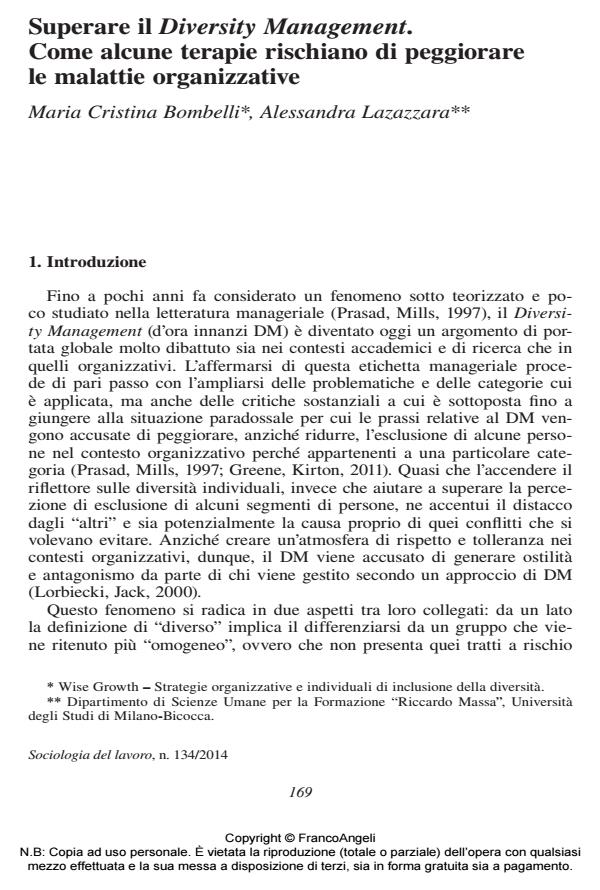Beyond Diversity Management. How some therapies risk to worsen organizational diseases
Journal title SOCIOLOGIA DEL LAVORO
Author/s Maria Cristina Bombelli, Alessandra Lazazzara
Publishing Year 2014 Issue 2014/134
Language Italian Pages 20 P. 169-188 File size 135 KB
DOI 10.3280/SL2014-134011
DOI is like a bar code for intellectual property: to have more infomation
click here
Below, you can see the article first page
If you want to buy this article in PDF format, you can do it, following the instructions to buy download credits

FrancoAngeli is member of Publishers International Linking Association, Inc (PILA), a not-for-profit association which run the CrossRef service enabling links to and from online scholarly content.
The maturity stage characterizing the development of the construct of diversity management, along with the growing popularity of its application in organizations, led to critical thoughts regarding the concept of diversity and diversity management practices. The paper aims at debating on these practices, as well as on the notion of diversity itself, through a critical review of the literature on diversity management and by deepening some controversial aspects of diversity management that invalidate its effectiveness, e.g.: dynamics of inclusion or accentuation of stigma, connection between diversity management and human resource management practices, competitive advantage brought by diversity management, link between diversity management and organizational communication, and measurement of the effectiveness of diversity management practices. Moreover, a new theoretical framework is proposed, where the concept of "diversity" is replaced by the more inclusive concept of "plurality".
Keywords: Diversity management, human resource management, stigma, measurement of practices, organizational communication, plural approach
- Le influenze culturali e istituzionali nel diversity management. Un confronto tra Italia, Francia, Svezia, Germania e Regno Unito Alessandra Lazazzara, in STUDI ORGANIZZATIVI 2/2016 pp.74
DOI: 10.3280/SO2015-002003
Maria Cristina Bombelli, Alessandra Lazazzara, Superare il Diversity Management. Come alcune terapie rischiano di peggiorare le malattie organizzative in "SOCIOLOGIA DEL LAVORO " 134/2014, pp 169-188, DOI: 10.3280/SL2014-134011